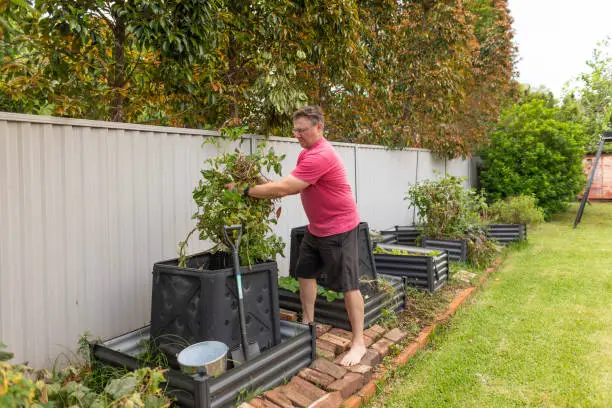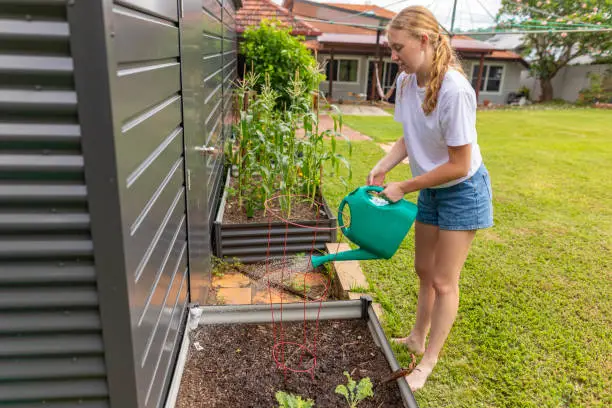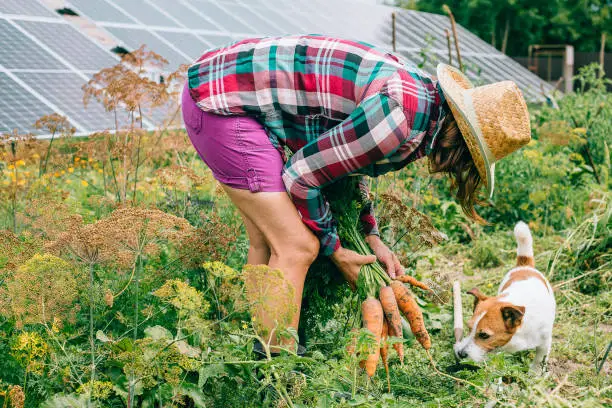Natural Backyard Homestead Pest Treatments
Pest control is a significant issue in backyard homesteading. These unwanted guests can destroy your carefully manicured plants. Many gardeners use natural methods to preserve their crops. We discuss natural pest control methods to promote a healthy garden ecology.

Understanding the delicate balance of your garden’s ecosystem is critical to natural insect control. Fostering biodiversity creates a self-regulating habitat where beneficial predators and pests balance. Indeed, companion planting is both appealing and strategic. Certain plants repel pests or attract their natural enemies, providing organic pest control. Marigolds make great companions for tomatoes and peppers because they resist worms and other pests.
Promoting beneficial insects is another natural pest control strategy. Ladybugs, lacewings, and hoverflies are charming garden additions and fierce aphids, mites, and other pest predators. Leaving some portions of the garden natural, planting native flowers, or constructing insect hotels can boost their populations and garden health.
Neem oil, produced from neem tree seeds, is a natural solid insecticide used for generations. When handled properly, azadirachtin affects pest life cycles without harming beneficial insects.
Diatomaceous earth is another natural garden pesticide. The fossilized remains of diatoms form this powder. Diatomaceous earth destroys pest exoskeletons, causing dehydration and death. Food-grade diatomaceous earth can damage beneficial insects if it touches them, so use it carefully.
There are many other pest-repellent DIY cures. Garlic spray repels many insects. A strong pest-repellent spray can be made by mixing a few garlic cloves with water and soap. Similarly, chili pepper and water can deter many insects from eating plants. These natural sprays are safe for humans and dogs, making them ideal for chemical-free gardens.
Physical barriers are another excellent natural pest control method. Floating row covers can protect young plants from flying insects and birds without blocking sunshine or water. Copper bands around plant bases repel slugs and snails, a simple but efficient barrier.
Crop rotation is a primary agricultural method and pest control. By rotating crops annually, you can avoid pests that prefer certain plants. This approach controls pests and improves soil health, making plants more robust.
Garden monitoring is essential for pest control. Early pest detection can improve results. Regular plant inspection, especially of leaf undersides where pests lurk, can help you spot and resolve concerns before they worsen. Being proactive and vigilant enables you to manage pests and reduce garden damage.
Finally, embracing some pests can be healthy for natural garden management. The occasional chewed leaf or bug observation is not necessarily alarming. By focusing on ecosystem health rather than perfection, you may have a lush, vibrant garden that supports a rich tapestry of life, both seen and unseen.
Using natural pest control in your backyard homestead involves patience, observation, and a willingness to cooperate with nature. You may defend your garden from pests without chemicals by encouraging helpful insects, utilizing natural pesticides, and building barriers. This method helps your plants and produce thrive and protects the environment, establishing a garden for future generations.
The Power of Chickens for Backyard Homestead Pest Control and Soil Improvement
Chickens offer a complex approach to pest management and soil fertility in backyard homesteading. This natural technique reduces chemical use and enhances the household’s cooperation with plants and wildlife. Chickens’ constant foraging helps improve soil quality and reduce pests, implementing sustainable agriculture in a backyard.
Chickens are fascinating and valuable pest controllers. Chickens are natural foragers and can seek and eat beetles, grubs, and ticks, decreasing the need for insecticides. This organic pest control strategy maintains the garden’s ecosystem, protecting plant health and the environment. Chickens scratching and pecking in the garden is a homesteader’s pest-control strategy.
Chickens also improve the soil in various ways. Their continual scratching enhances soil structure and air and water penetration. This natural tilling is essential for root development and garden health. Chicken manure, rich in nitrogen, phosphate, and potassium, is an excellent organic fertilizer that boosts plant development and yields. Thus, adding hens to the garden manages pests and enriches the soil, producing a circle of fertility and abundance.
Chicken-based pest control and soil enhancement require careful planning and administration. Free-range hens can overgraze and destroy young plants. Thus, managed foraging, such as moving chicken tractors or designated foraging areas, can reduce damage while maximizing chicken pest control and soil improvement. This selected strategy ensures that chickens benefit the garden ecology without causing damage.
The addition of hens to the garden cycle is part of permaculture. Chicken advantages can be enhanced by companion planting, crop rotation, and beneficial insect habitat. Cover crops provide chickens with more fodder, which boosts soil fertility through manure. Strategic planting can shield sensitive plants from chicken grazing, ensuring garden harmony.
The homesteader’s chicken bond goes beyond usefulness to ethics. Chicken health affects pest management and soil improvement; thus, it’s crucial. Responsible chicken rearing requires shelter, feed, and predator protection. Healthy, happy chickens are better foragers and soil improvers, showing how the homestead ecosystem is interconnected.
Chickens provide eggs, meat, companionship, entertainment, pest management, and soil development. In backyard homesteading, every element serves many uses, ensuring resilience and sustainability. Permaculture and sustainable agriculture view chickens as fundamental to the homestead’s ecological and economic cycles.
Adding chickens to the backyard garden requires exploration and adaptation. Each household needs a customized approach to balance chicken-based pest control and soil improvement. Chicken, plant, and insect interactions reveal garden ecosystem dynamics, helping homesteaders improve their techniques and inventions.
Finally, hens help backyard homesteads manage pests and improve soil fertility. This method’s permaculture and sustainability concepts promote harmony and productivity between humans, animals, and the environment. By including hens in the garden, homesteaders may create a more balanced, resilient, and productive ecosystem, demonstrating the potential of backyard homesteading to improve the earth and future.
Continued research on backyard homesteading chickens shows their impact goes beyond practical benefits. Their presence in the garden strengthens the homesteader-nature bond. Chickens’ daily foraging, dust bathing, and social interactions teach us about nature’s rhythms and the need for a balanced, sustainable ecology.
A good example is the micro-circular economy with hens and gardens. Chickens turn household and garden waste into pest control, soil aeration, and fertilization. This cycle of renewal and regeneration shows how backyard homesteading can reduce environmental impact through sustainable practices.
Adding chickens to the garden is a gateway to self-sufficiency and ecological living experiments. Chickens are essential to a sustainable household, from composting to rainwater gathering.
The goal is to grow and learn with hens in the homestead garden. It emphasizes patience, observation, and respect for all life. By following these guidelines, homesteaders can construct a sustainable ecosystem that supports itself and its people for generations.






Leave a Reply